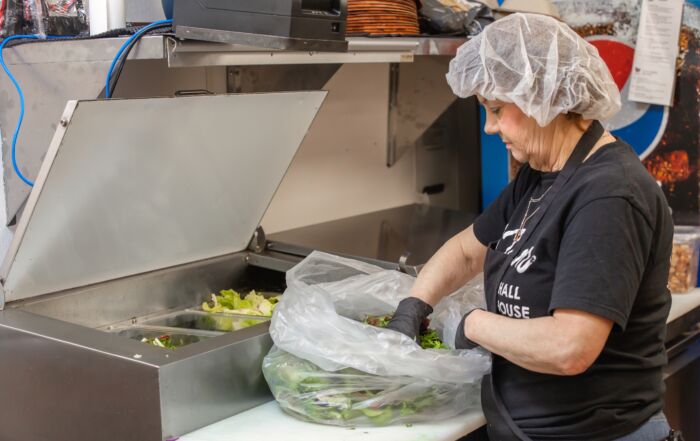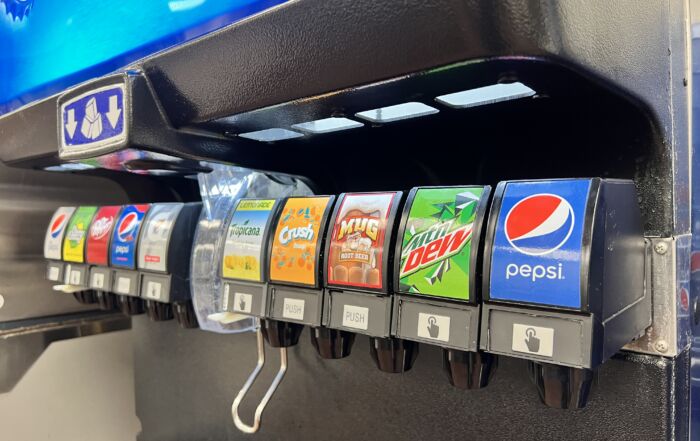Foodborne Illness Myths & Facts
“It must have been something I ate.” That’s the typical statement when a person develops some relatively minor symptoms from food. Maybe not severe enough to go to the doctor so you choose to tough it out without medical care. Sudden onset of flu-like symptoms such as onset of stomach cramps, diarrhea, vomiting and fever could possibly mean you are the victim of a foodborne illness. The illness is sometimes referred to as “food poisoning”, but it’s often misdiagnosed.
Who’s the Culprit? Foodborne illness has occurred when you are sick from eating food that has been contaminated with bacteria, viruses, parasites, or fungi. Causes of the symptoms vary greatly, but it’s help to know that misinformation exists via the customer route, the food service managers and crew, and even the medical professionals (if they haven’t had much specific training about foodborne illness).
The Best Investigators —In the food service industry, we never want to get a call from a customer with a foodborne illness claim. Prevention of such an incident is what food safety is all about. If the restaurant manager does get a call, you need to take it seriously and record the facts from the customer for further investigation. Many times the consumer does an incorrect self-diagnosis based upon the last meal that they ate at a restaurant – never from food out of their own refrigerator or from a meal eaten days before the illness symptoms show up. Health department professionals trained in food protection are the best source of helping to correctly diagnose a foodborne illness (contacted as soon as possible), provided the consumer has also contacted their doctor if they have acute symptoms.
The Common Foodborne Illness Myths:
1. Myth: Foodborne illness is caused by the last meal or food item eaten.
FACT: Foodborne illness can be caused by foods eaten a few hours to several days prior to your illness. A graphic point is that when symptoms show up, for example vomiting, you would throw up the last meal you ate, even though that is not the food that made you sick. In the case of the Hepatitis A virus, you may not have symptoms for up to 50 days. Can you remember what you ate for every meal up to a week ago, much less 50 days? It’s a tough task.
2. Myth: Foodborne illness is caused by eating foods from restaurants.
FACT: Bacteria and other pathogens (germs) can live and multiply in both the home and restaurant kitchens. Foodborne viruses are the very tiny hitchhikers that travel via fingertips and sometimes are airborne. Foods can be contaminated on counters, sinks, cutting boards, utensils, or via hands, resulting in a cause known as “cross-contamination”.
3. Myth: Foodborne illness is caused by food that has “gone bad”.
FACT: This is seldom the cause of foodborne illnesses. You CANNOT see, taste, or smell the food poisoning organisms in the food. Foodborne illness is usually caused by food becoming contaminated from the food preparers hands not being properly washed, incorrect time and temperature control, poor food handling practices, and unsafe preparation methods.
4. Myth: It must have been the mayonnaise that made me sick. It was not refrigerated.
FACT: Commercial mayonnaise and most bottled salad dressings are what we call “acidified foods”. They are safe at room temperature even after opening, although most restaurants and the manufacturer want them refrigerated to preserve the freshest flavor. Mayo and salad dressings have an acid level low enough that they do not support growth of microorganisms, unless they are heavily contaminated by a dirty utensil or mixed with other foods changing the acidity level of the mixture (such as in potato salad). Mayo all by itself and unrefrigerated is perfectly safe.
5. Myth: Foodborne illness is easily diagnosed.
FACT: In order to make an accurate diagnosis, the ill person must give a history of the symptoms and the foods eaten within the last three days. A stool specimen is the most telling clinical sample and should be collected from the victim for lab testing to identify the organism. Other samples to be collected might be emesis (vomit), the suspect foods from the restaurant or home kitchen, any leftover food from the suspect meal, and sterile swabs of equipment or food workers skin or nasal passage. These samples are now like a fingerprint and organisms can be matched to one another or to other victims in many cases. On a more positive note for food service, they can also be used to clear a restaurant of being the cause. Viral foodborne outbreaks, such as the #1 leading foodborne enemy, the “Norovirus”, are also tougher to diagnose than bacterial illnesses and have an incubation time of 24 to 48 hours before the victim has symptoms. Infection rate for Norovirus is high, but is sometimes not reported so continues to spread.
6. Myth: All foodborne illnesses are the same
FACT: Foodborne illness is caused by many different organisms. For example, “Salmonella” has approximately 2000 identified types. The organism determines how long it takes for illness to occur, signs, symptoms and duration of the illness. The illness can vary from mild flu-like symptoms to very serious illness or even death if the victim is a high risk individual (children, elderly, pregnant women, people who are immune compromised or on certain medications).
***
About the Author: Lacie Thrall
Lacie Thrall passed away in early 2017 after a long illness. She dedicated her 35-year career to improving the health and well-being of others by promoting food safety best practices. Lacie worked in environmental health for 17 years before joining FoodHandler in 1997 as the Director of Safety Management. While at FoodHandler, she trained employees and customers on safe food handling practices, including proper hand hygiene and glove use. Later as a FoodHandler consultant, Lacie provided the foodservice industry with food safety information and advice through her blog on FoodHandler.com.
Safely Shopping at Farmers’ Markets: A Food Safety Guide for Foodservice Operators and Chefs
Farmers’ markets are an appealing source of fresh, local, and seasonal ingredients for individuals and [...]
Ice Machines, Beverage Dispensers & Other Overlooked Food Safety Hazards
At the end of the spring semester in our campus food production lab, we’re fortunate [...]
What Foodservice Professionals Need to Know about the FDA Milk Testing Changes
In late-April and early-May 2025, headlines across the country and several social media posts stirred [...]
Before They Arrive: Your Health Inspection Prep List
A few weeks ago, I welcomed our local health inspector into a class I was [...]











